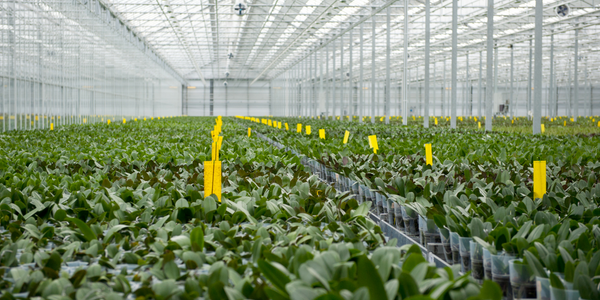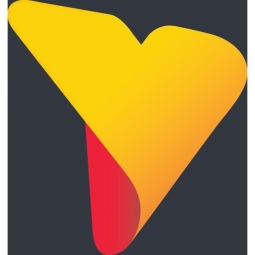Download PDF
How Yellowfin helps a leading agri-food company recognise the ‘why’, not just the ‘what’ of its business performance
Technology Category
- Platform as a Service (PaaS) - Data Management Platforms
- Analytics & Modeling - Predictive Analytics
- Functional Applications - Enterprise Resource Planning Systems (ERP)
Applicable Industries
- Food & Beverage
- Agriculture
Applicable Functions
- Sales & Marketing
- Business Operation
Services
- System Integration
- Cloud Planning, Design & Implementation Services
The Challenge
Several years ago, Rivalea decided to implement a company-wide enterprise resource planning (ERP) system. While the chosen solution delivered reporting functionality, General Manager for Sales and Marketing, Mark McKenzie, found the group needed a better and faster understanding of business performance. He wanted to see business analytics as well as reporting, so the company decided to investigate business intelligence (BI) platforms. After reviewing a few options, Rivalea opted to go with the Yellowfin Cloud BI solution, supplied and supported by local Yellowfin business partner, Toustone. “We knew we didn’t have the inhouse resource within the group,” said McKenzie, “so we needed some guidance and we felt we couldn’t go wrong with Toustone. It helps that they are local, as we know we can rely on their ongoing support”.
About The Customer
Rivalea is one of Australia’s leading agri-food businesses, located in Corowa, on the New South Wales bank of the Murray River. The company’s unique, highly-integrated production, processing, and distribution system enables it to offer a range of premium pork products to major retailers, wholesalers, food service companies, and export customers; along with a range of animal nutrition products for livestock producers. Rivalea processes and distributes around 17% of the country’s premium pork products. The company also supplies a range of animal nutrition products for livestock producers.
The Solution
Rivalea utilises Yellowfin’s reporting capability to monitor sales through key product and customer channels, enabling the sales team to spot sales issues and take corrective action before targets are missed. That report information is also used to identify the activities of high-value customers and ensure they are closely managed to optimise the relationship, and equally to identify lost or slipping customers so they can be targeted. While accurate and easy-to-digest reporting is useful, it’s only part of the picture as far as McKenzie is concerned. For him, the focus is on accountability – at both a functional and individual level. If sales data doesn’t match forecasts, the business and those responsible need to know quickly if it relates to a sales issue or a production issue, so that actions can be implemented. The Yellowfin Cloud BI solution delivers a degree of analysis that enables better business decisions because it means McKenzie and his team can take corrective action as soon as a problem is identified. Its intuitive and easy-to-use interface also means that any person inside the organisation can drill down into reports and data to answer any queries that may arise. Many of the team have cross-functional responsibilities, so having access to real-time accurate data, presented in an easy-to-digest visual format allows them to better understand the business on a day-to-day basis. That accountability extends across sales and expenditure, with key sales and marketing personnel having access to timely expense reporting versus budget, specific to their cost centre, ensuring the process is properly managed and that available budget is being utilised.
Operational Impact
Quantitative Benefit
Related Case Studies.

Case Study
Intelligent Farming with ThingWorx Analytics
Z Farms was facing three challenges: costly irrigation systems with water as a limited resource, narrow optimal ranges of soil moisture for growth with difficult maintenance and farm operators could not simply turn on irrigation systems like a faucet.

Case Study
The Kellogg Company
Kellogg keeps a close eye on its trade spend, analyzing large volumes of data and running complex simulations to predict which promotional activities will be the most effective. Kellogg needed to decrease the trade spend but its traditional relational database on premises could not keep up with the pace of demand.

Case Study
HEINEKEN Uses the Cloud to Reach 10.5 Million Consumers
For 2012 campaign, the Bond promotion, it planned to launch the campaign at the same time everywhere on the planet. That created unprecedented challenges for HEINEKEN—nowhere more so than in its technology operation. The primary digital content for the campaign was a 100-megabyte movie that had to play flawlessly for millions of viewers worldwide. After all, Bond never fails. No one was going to tolerate a technology failure that might bruise his brand.Previously, HEINEKEN had supported digital media at its outsourced datacenter. But that datacenter lacked the computing resources HEINEKEN needed, and building them—especially to support peak traffic that would total millions of simultaneous hits—would have been both time-consuming and expensive. Nor would it have provided the geographic reach that HEINEKEN needed to minimize latency worldwide.

Case Study
Greenhouse Intelligent Monitoring and Control Solution
Farming Orchids is the most successful form of precision farming in Taiwan, and also the most exported flower. Orchids need a specific temperature and humidity conditions to grow and bloom, and its flowering time may not be in line with market demands, so the price collapses when there is overproduction. Therefore, some farmers began to import automated greenhouse control systems for breeding and forcing, which not only improves quality, but also effectively controls the production period and yield to ensure revenue. In 2012, an orchid farmer built a Forcing Greenhouse of about 200 pings (approximately 661 Square Meters) in Tainan, Taiwan. The system integrator adopted Advantech’s APAX-5000 series programmable automation controllers to build the control platform, coupled with Advantech WebAccess HMI/SCADA software, to achieve cloud monitoring. The staff of the orchid field can monitor important data anytime via smart phone, iPad, and other handheld devices, and control the growth and flowering conditions. System requirements: In the past, most environmental control systems of orchid greenhouses in Taiwan used PLCs (Programmable Logic Controller) with poorscalability and control, and could not be connected to the Internet formonitoring from the cloud. For advanced database analysis and networking capability, the PC platform must be adopted. Therefore, PAC Systems (Programmable Automation Controller) with both PLC programming capabilities andPC functions is a better choice.The environmental control of the Orchid greenhouse switches on and off devices like fan, shade net, cooling/heat pump, liquid flow control, water-cooling wall etc. It is controlled by a control panel of electric controllers, and is driven by a motor, to adjust the greenhouse temperature, humidity, and other environmental conditions to the set parameters.







